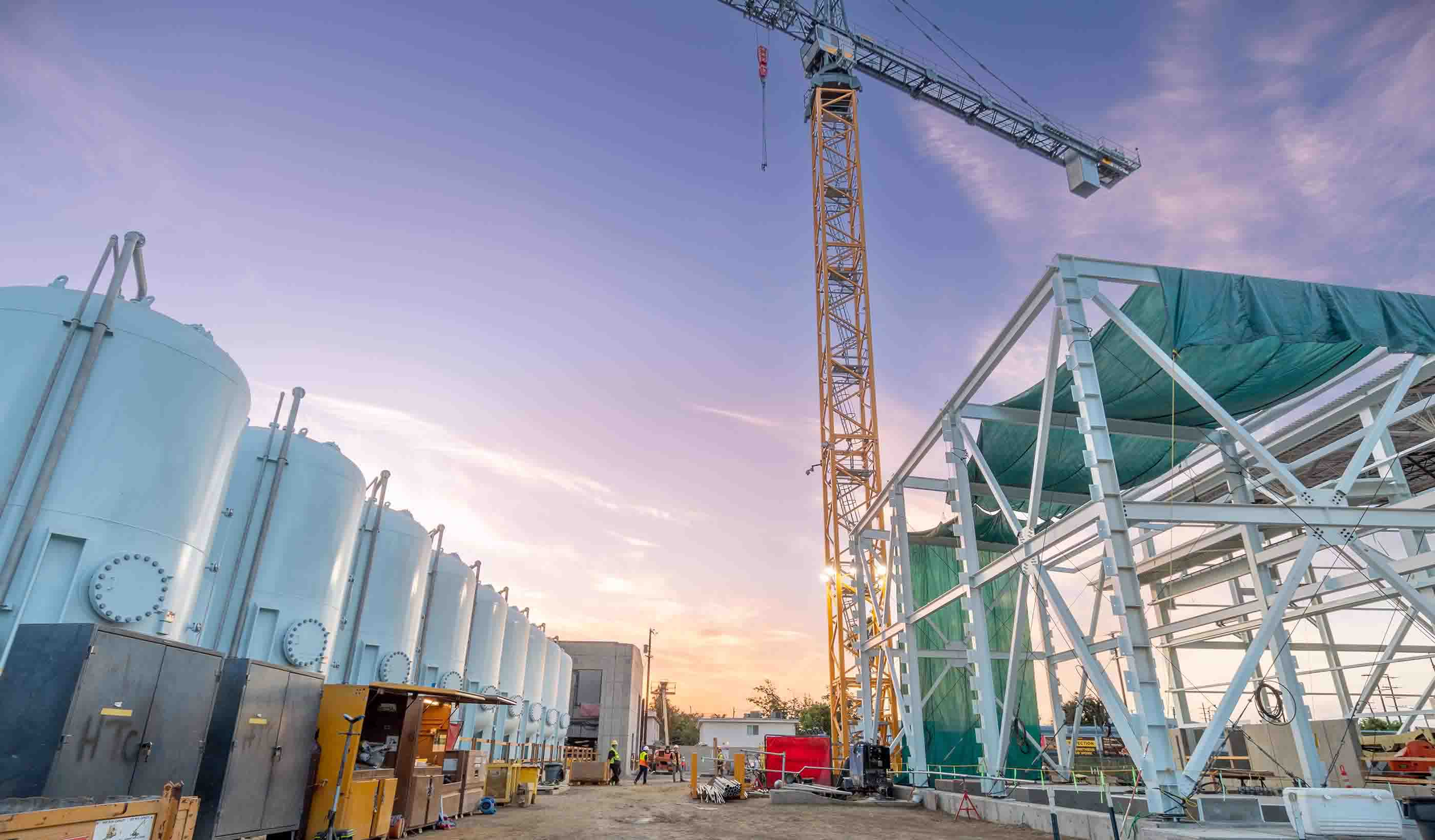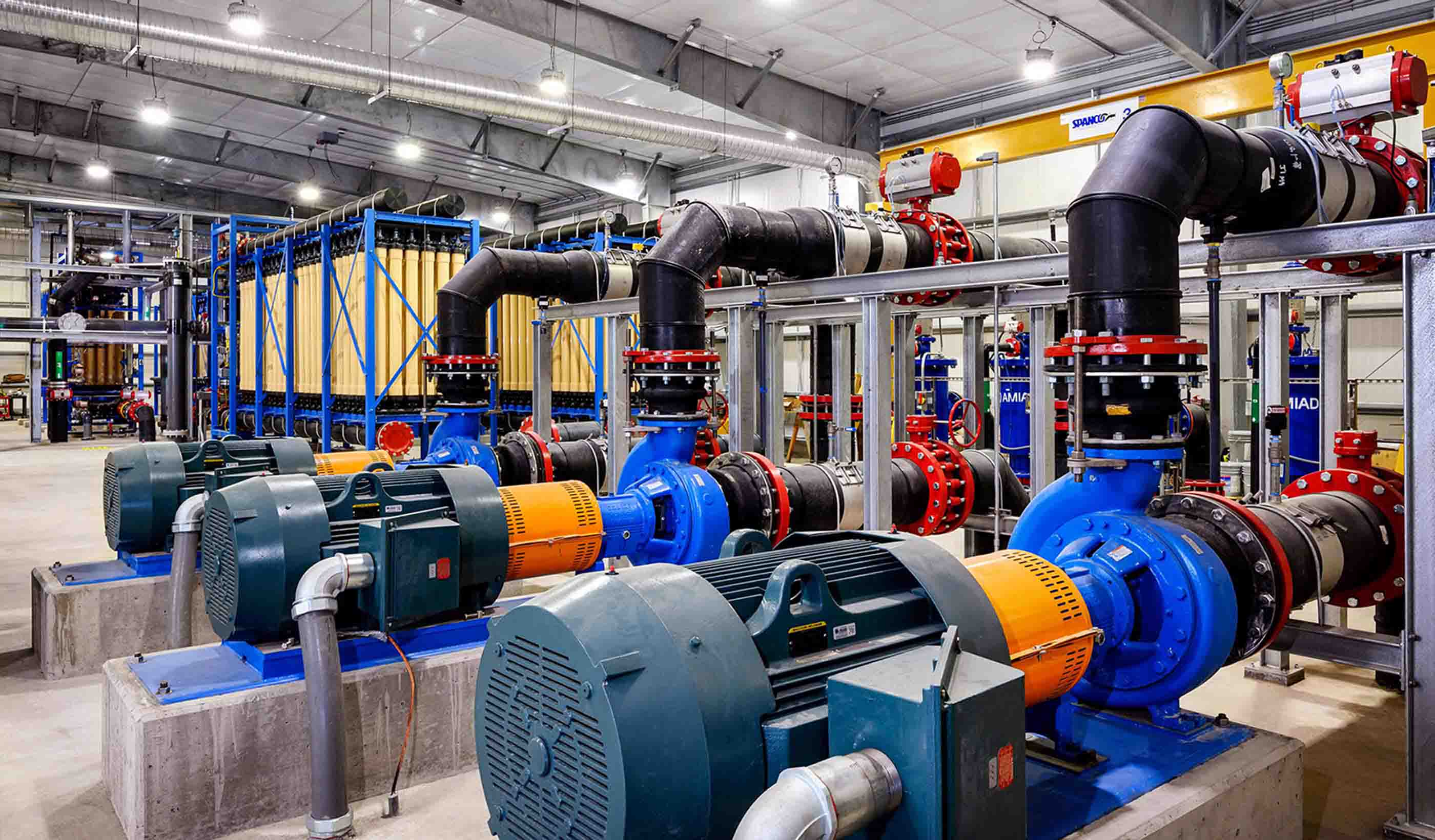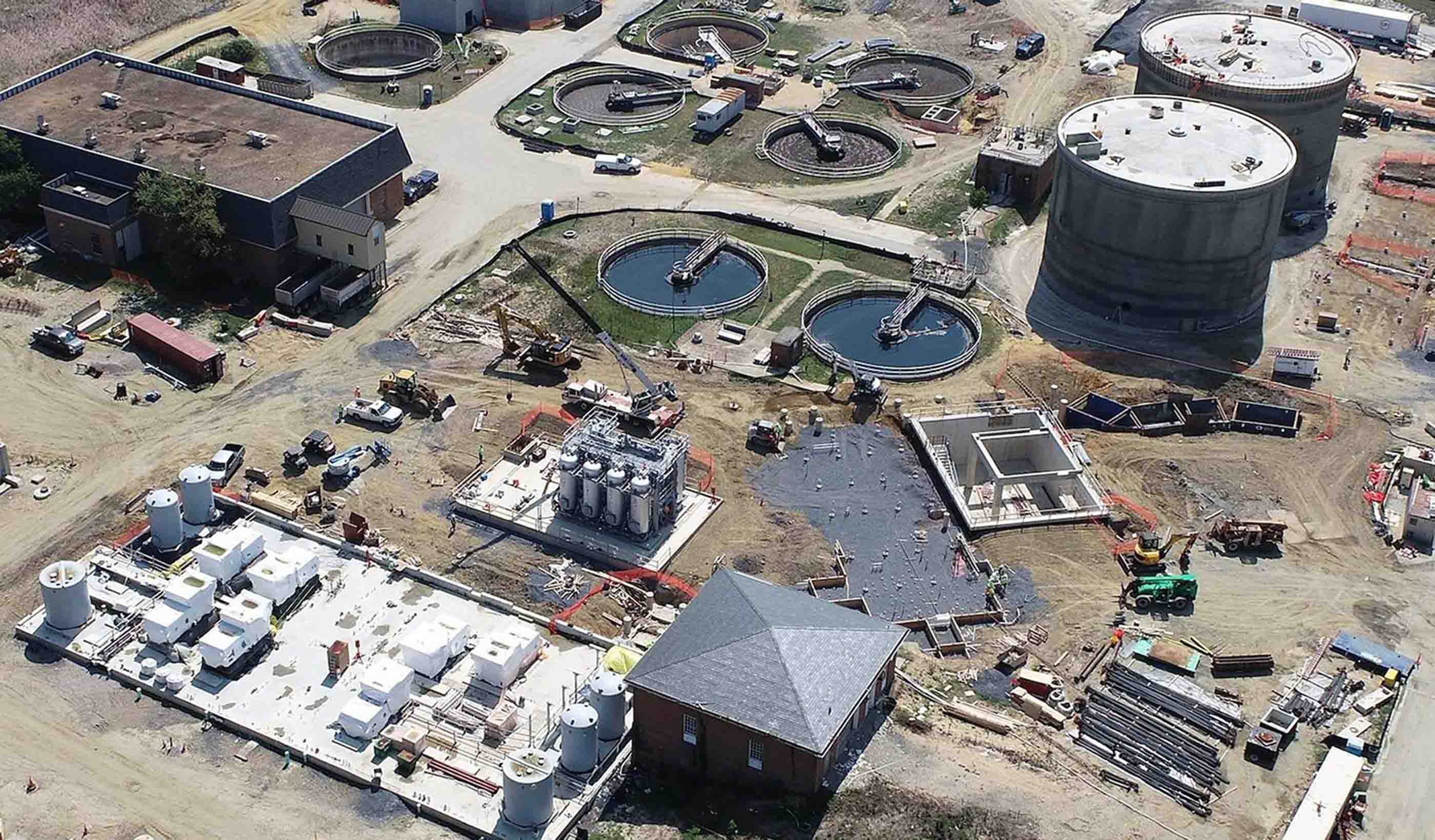The water industry is turning to progressive design-build. Here’s why.
July 30, 2024
July 30, 2024
Public water agencies are turning to progressive design-build for major projects. Here’s a look at 4 situations when it’s possibly the best choice.
Progressive design-build is becoming a popular alternative delivery model for projects in the water industry. This is especially true as more states remove regulatory barriers. Add to that the flood of federal funding in the US for infrastructure projects and you’ve got a gold rush.
We have more clients learning about this collaborative delivery model and asking if it’s right for them. From working with the Los Angeles Department of Water and Power (LADWP) on its first progressive design-build on the West Coast to the groundbreaking Piscataway Water Resource Recovery Facility on the East Coast, our team has years of practice with progressive design-build. We’ve seen some exceptional projects delivered this way.
The best part? We love the interaction with our clients and partners because it makes the work enjoyable. In this blog, we’ll talk about what progressive design-build is, when to choose it, and why it’s becoming a preferred delivery model.

The North Hollywood treatment facility is part of LADWP’s San Fernando Valley Groundwater Basin Restoration project, its first progressive design-build on the West Coast.
Standard design-bid-build is the more traditional method for water projects. This is when an engineering firm, like Stantec, designs a project. Then, it is advertised for bidding and construction. This process, however, doesn’t usually tap a contractor’s expertise to build a cost-effective, constructible project.
But progressive design-build is a type of collaborative delivery where a design firm partners with a contractor from the start. The team bids on the work together. They collaborate with the owner on the design and construction—from start to finish.
Private industries have used alternative project delivery for decades. But the use of progressive design-build in public water projects is growing as more public agencies see the benefits. Evidence of their success is influencing legislatures in states where public funding cannot yet be used for this delivery model.
In 2022, Senate Bill 991 was passed in California. This bill enables public works to use progressive design-build. After that, several cities began planning and awarding contracts for projects that would benefit from it.
As more states offer legislative support for this project delivery method, we expect an influx of projects in the water industry as this catches on.

Our team completed a retrofit of the Lewiston Water Treatment plant with construction partner IMCO using progressive design-build.
Progressive design-build is a good option for specific types of projects—ones that are large or that may have a high-risk profile. High risk could mean anything from uncertainty about existing conditions to the need to rehabilitate aging infrastructure. It’s no secret that America’s infrastructure is aging. Agencies and utilities around the US need to fix their systems before they fail or must address changing mandates. Progressive design-build can help meet these needs.
There are other high-risk situations. It could also apply when there are multiple interested parties, a tight delivery time, budget constraints, or physical site constraints.
Collaborative delivery works well for complicated process projects. For example, sometimes a project owner needs a contractor or designer to meet a certain outcome (like a specific water quality output). With progressive design-build, the contractor works with the integrated team to develop an innovative solution to meet that outcome.
So now we know why this is catching on as a collaborative delivery model. How do you know if it’s right for your water project? Here is a look at four times when it can help.
So now we know why this is catching on as a collaborative delivery model. How do you know if it’s right for your water project?
1. When creative solutions are needed
Progressive design-build allows the team to collaborate and find creative solutions to problems as they arise. In the City of Lewiston, Idaho, we helped replace its 100-year-old water treatment plant. This was a challenge because we needed to keep the aging infrastructure running on a constrained site while we worked to replace it.
We worked with the city and our contractor partners to deliver this project on a short timeframe, using temporary treatment trailers and battling long lead times for permitting and equipment. Trust and teamwork from all parties help the project move forward.
2. There is set budget and timing
Alternatively, while progressive design-build is great for projects without a set scope, it’s also helpful for projects that do have a set budget or time frame.
One of the best uses of collaborative delivery is when an owner sets a goal for a project and is transparent about the budget. This allows the team to work together to deliver the project to the client within that budget. Everything is transparent, and major decisions and scope changes can be discussed and determined if necessary for inclusion to achieve the project goals.
We regularly work with municipal clients who have a set amount of grant funding. We help them maximize what they can deliver to their ratepayers within that amount. Often our industrial clients have set timelines to achieve for stockholders. Collaborative delivery allows teams to design and construct treatment facilities much more quickly.
With this delivery model, construction starts when the project hits a specific design milestone, usually around 65 percent design. This helps teams stay on a fast-tracked schedule to finish a project within a regulatory deadline or other required timeline.
3. There are risk concerns
If an owner is uncertain about the risks involved, progressive design-build may be helpful. For example, projects that include brownfield sites with rehabilitation work and unforeseen conditions could benefit. It allows the contractor to develop the scope incrementally as they get a clearer picture of risk.
When using the model, a portion of the project risk is transferred to the contractor rather than the owner. It’s an acceptable level of risk because we are all in this together—but at the end of the day, project owners feel more at ease when they aren’t shouldering all the risk.
This was the case for the Piscataway Water Resource Recovery Facility. It’s a large, technically advanced project where we are the lead designer. There was a high degree of perceived risk in the technology for the project, and using progressive design-build allowed the client to benefit from control of the design. It also helped operators to learn about the facility’s function while it was being designed. Ultimately, it allowed us and our contractor partner to handle three big risks: manufacturer supply chain issues, delivery schedule, and management of overlapping vendors directly.

Our team is the lead designer and engineer of record for the Piscataway Water Resource Recovery Facility, which uses an innovative thermal hydrolysis process to convert biosolids to energy.
4. When collaboration is key
Progressive design-build is great for owners with a team-oriented vision. It’s a major departure from the design-bid-build model where a project owner only sees the design at key review milestones.
We know that many parts of a project—from procurement to project engagement—can require change or need to adapt. This can catch an owner by surprise. But with collaborative delivery, the design-build team can set expectations early. To get the full value of this method, the whole team needs to come to the table often—with an open, best-for-project mindset. They need to be ready to solve problems and tackle the design development through commissioning and handover.
For example, the design phase of the San Fernando Valley Groundwater Basin Restoration project for LADWP relied on private property being acquired by a certain date. Unfortunately, the COVID-19 pandemic led to heavy delays in the acquisition process. This caused major schedule impacts to the overall project. However, because of collaborative delivery, the team was able to work with the owner to change the building design and layout so it didn’t rely on those properties. This changed the scope of the project without it going back out to bid.
It's not always easy to find and implement these kinds of solutions. In this case, it was quick and efficient because the entire team knew the project goals and constraints and found creative solutions that satisfied all requirements.
Of course, there are also occasions when progressive design-build might not be the right delivery model. This includes:
It’s clear that clients are interested in progressive design-build and the benefits it offers. And we’re ready to help owners who still want to learn more. From what we’ve seen with clients like City of Lewiston and LADWP, once a municipal organization tries this, they choose it again for future projects.
Progressive design-build is one of our favorite methods of collaborative delivery. It is great for building consensus, fostering creative solutions, and leaving room to be flexible to build the best possible project. We know there’s a flurry of water projects that can benefit from this model across North America, and with more support for it, we expect more owners will try it.